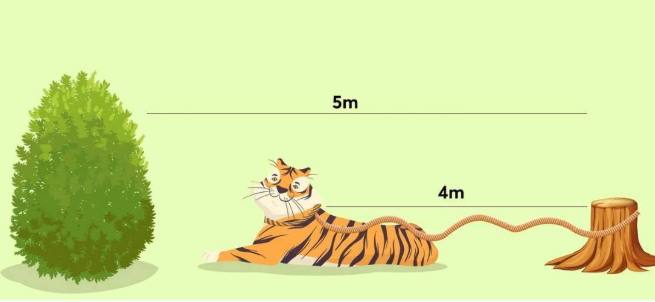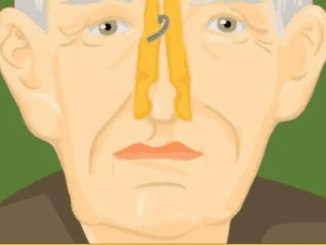Riddles have a knack for making us scratch our heads, challenging not just our logic but also how we perceive information. Take this brain teaser, for instance: Imagine a tiger tied to a tree with a 4-meter-long rope. Five meters away from the tree’s base lies a lush patch of grass. The question is, how does the tiger eat the grass?
At first glance, this puzzle seems to demand a solution based on physics or clever maneuvering. But the truth? It’s simpler than you think. Let’s unravel this riddle step by step and discover how it tests your ability to think critically.

The Setup: A Problem That Seems More Complex Than It Is
This riddle presents a vivid scenario, setting up constraints and inviting the solver to dive into the logistics. The elements are straightforward:
- A tiger, tied to a tree with a 4-meter rope.
- Grass, 5 meters away from the tree’s base.
The immediate challenge appears to be the distance—how can the tiger reach something that’s just out of its grasp? But before we get tangled in calculations, let’s pause to question the premise.
The Common Missteps: Why This Riddle Trips People Up
Riddles like this are designed to lead you astray, and this one does so in three main ways:
1. Focusing Too Much on the Rope’s Length
The first instinct for most people is to think about the rope. Can it stretch? Can the tiger tug hard enough to loosen it? Or maybe the grass is within reach if the rope is attached to a point off-center from the tree’s base? These calculations distract you from the bigger picture.
2. Ignoring the Tiger’s Diet
We’re so absorbed in solving how the tiger might eat the grass that we forget to ask why it would want to. Tigers are obligate carnivores. Grass isn’t part of their diet. This oversight is the key to the riddle’s trick.
3. Overcomplicating the Problem
Many solvers come up with elaborate scenarios: the tiger pulls the tree, the grass gets blown closer by the wind, or the rope breaks under pressure. While imaginative, these solutions miss the simplest explanation.
Breaking It Down: How to Solve the Riddle
To crack this puzzle, you need to shift your focus from the mechanics of the scenario to its biological and logical implications.
Step 1: Question the Premise
Before you figure out how the tiger eats the grass, ask whether it would even want to. Tigers are predators; their bodies are built to hunt and digest meat. Grass offers no nutritional value to them. So why would the tiger bother trying to eat it?
Step 2: Consider the Tiger’s Natural Behavior
While it’s true that some carnivores occasionally chew on grass, it’s not for sustenance. Tigers may nibble grass to aid digestion or induce vomiting when they’ve eaten something indigestible, but this is rare and incidental.
Step 3: Arrive at the Logical Conclusion
The tiger doesn’t eat the grass—not because of the rope, not because of the distance, but because it simply has no interest in doing so. The riddle tricks you into overthinking by presenting unnecessary details.

Why This Riddle Is So Clever
What makes this riddle memorable is its simplicity disguised as complexity. It plays on our tendency to focus on physical constraints while ignoring the fundamental facts of the scenario. The mention of a rope, a tree, and a distance creates a sense of urgency to solve a nonexistent problem.
By steering your attention toward logistics, the riddle cleverly hides the real solution in plain sight: the tiger wouldn’t eat the grass in the first place.
Lessons Learned from This Brain Teaser
Riddles like this one aren’t just fun—they’re also great for sharpening critical thinking skills. Here are a few lessons to take away:
1. Always Question Assumptions
Before diving into the mechanics of a problem, ask yourself whether the premise makes sense. In this case, the assumption that a tiger would eat grass is false, making the entire question irrelevant.
2. Simplicity Is Often the Key
The simplest solution is often the correct one. Avoid overcomplicating problems by sticking to basic facts and reasoning.
3. Think Beyond the Obvious
Riddles often rely on misdirection. Take a step back and consider whether you’re focusing on unnecessary details.
Why We Love Riddles Like This
This type of brain teaser reminds us of the joy of thinking outside the box. It’s not about finding the most creative or elaborate solution—it’s about recognizing the simplest truth. Riddles engage our problem-solving skills, challenge our assumptions, and, above all, entertain us with their clever twists.
Conclusion: The Beauty of Logical Thinking
The answer to this riddle—the tiger doesn’t eat the grass because it’s a carnivore—is delightfully simple. But the journey to that conclusion highlights how easily we can be misled by extraneous details. It’s a reminder that sometimes, the best approach is to pause, step back, and consider the bigger picture.
So, the next time you encounter a seemingly perplexing problem, remember this: the simplest answers are often hiding in plain sight. And isn’t that the best kind of challenge?


